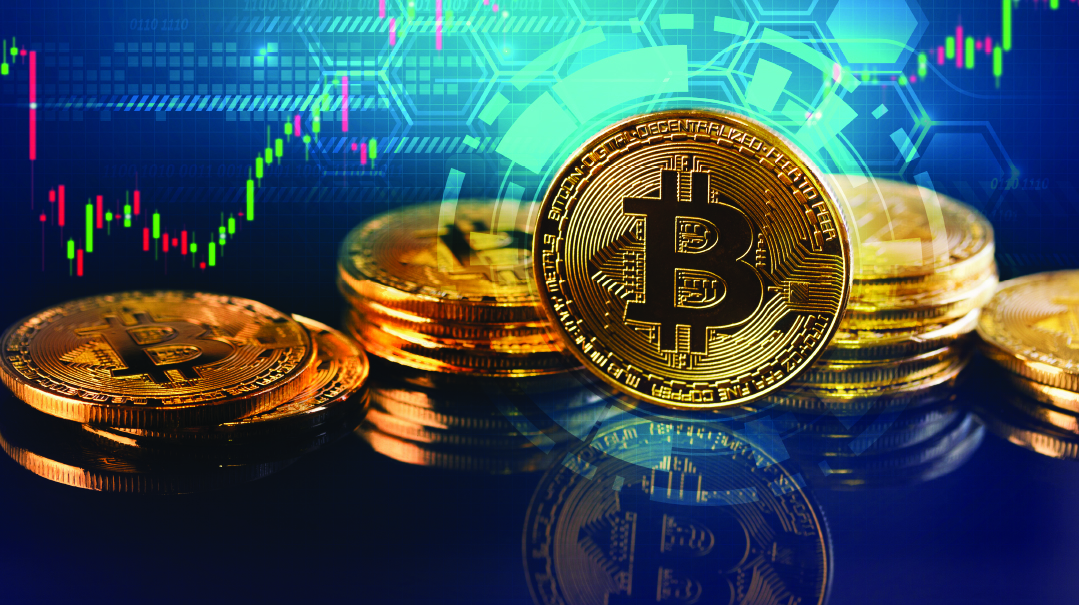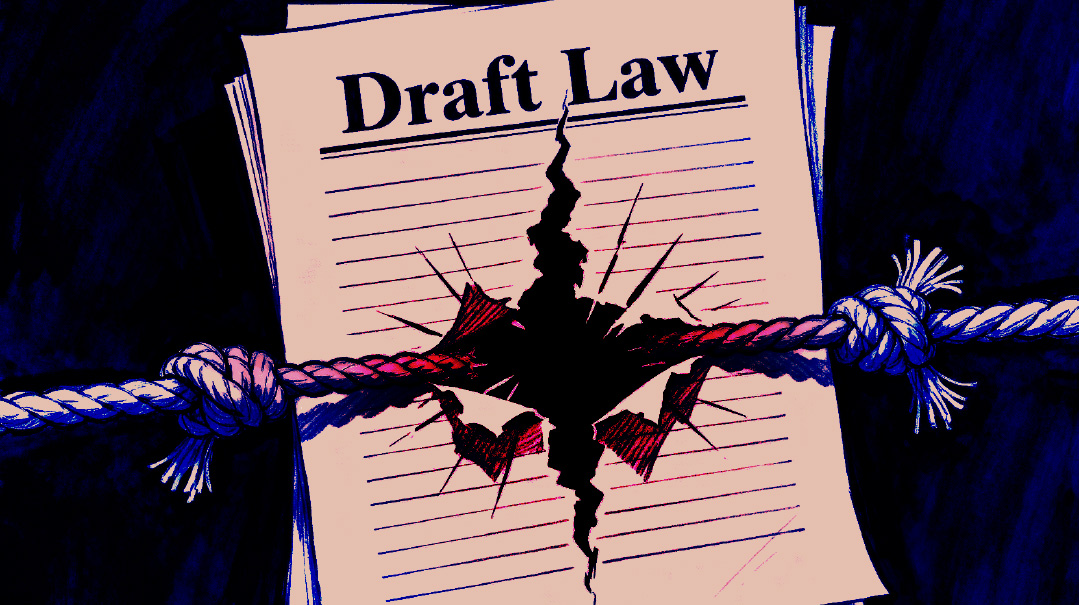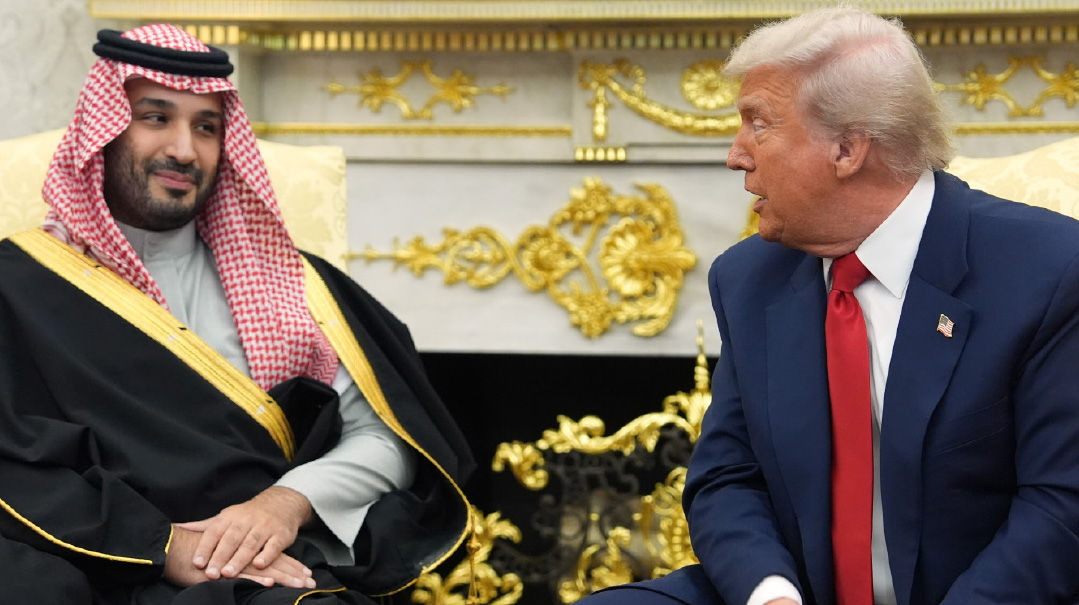Cash or Craze

Inside the Bitcoin boom

A week after the financial world buzzed with short trading and GameStop, Bitcoin became the word of the day. It jumped last Thursday to an all-time high of $48,481.45, some 1,200 percent higher than a year ago, and several billionaires moved to invest in it heavily and formulated plans to make it as fungible as cash or credit cards (though few believe right now that your local supermarket will advertise “cash, plastic, or bit”). The total market value for Bitcoin is now at about $800 billion.
America’s oldest bank, BNY Mellon, announced a new unit to help clients hold, transfer, and issue digital currency. Tesla CEO Elon Musk revealed he had purchased $1.5 billion worth of the cryptocurrency and would soon accept it as a form of payment for cars. Twitter’s Jack Dorsey said that he and rapper Jay Z are establishing a Bitcoin development fund to make it as commonplace as cash. Mastercard said it would start accepting certain cryptocurrencies, allowing merchants to accept it as payment.
Is that why Bitcoin is enjoying its biggest price jump in its short history? Not really — but you need a primer to understand it. Before answering the question “What is cryptocurrency?” we need to ask the question, “What is currency?”
Matter of Trust
Wealth is what society — you, I, and the grocer — considers valuable, and it’s likely to remain that way. Chicken schmaltz with griven may be rare in one part of the world, but it’s not likely to hold its value, so it cannot be called money. Salt was once considered valuable and was used by ancient Rome as cash — salary comes from the Latin word for salt, sale. Perennial items of value include gold, silver, and precious gems. Many societies around the world minted small quantities of gold and silver in coins, which could be used in everyday economic transactions.
Eventually, governments began printing money, backing paper bills with reserves of gold bars they kept in secure storage. The creation of cash was a revolution; large denominations could be easily and securely carried around, while maintaining the two benchmarks required to be called money — it has value and will likely retain it. Theoretically, anyone could present himself at his government’s treasury and exchange a paper bill for the amount of gold it represented.
The United States went off the gold standard in the 1970s, meaning that the government was considered stable enough to guarantee its currency without having to actually store the gold bullions. Rather than representing an amount of gold, a dollar represented... simply a dollar. Countries such as Zimbabwe and Venezuela, on the other hand, found out the hard way that dictators cannot force people to ascribe value to paper currency if they are not stable countries.
So basically, a Benjamin is worth $100 because the US government says so, and we as a society choose to trust them. All currency now operates on fiat — Latin for “by decree.” The government decrees that a dollar has a certain purchasing power, therefore it is so.
Monopoly Money
Money has worth because the government says so? That’s so 2000, mock the Bitcoin people. They refer to actual cash as “analog” money and say the world is headed toward a future of digital money. Cryptocurrency is a decentralized and trustless system. You don’t have to trust the bank to do the right thing, because it’s all on a transparent public ledger.
But how does it work? It’s like the board game Monopoly, says Florida investor Moishy Gourarie. Four siblings sit down to a game, spread out the board, and begin the race of chance and luck. There is technically an invisible banker there doling out the cash and accepting the fines, but you don’t actually need a fifth brother to stay on the sidelines and be that banker.
“When people play Monopoly,” Gourarie says, “you don’t need an actual bank, because it’s all in the open. You pass go, you collect $200. You land on Income Tax, you pay $200. It’s the same with Bitcoin. People ask me all the time, ‘Oh, Bitcoin? Who’s it owned by?’ But it’s not owned by anybody. That’s the beauty of it.”
The cryptocurrency was invented by “Satoshi Nakamoto,” a mysterious figure who regularly posts articles about his brainchild. From his writing style, it is speculated that Nakamoto is an individual, but little is known about him. He may even be a composite drawn from a group of people.
Banking on Blockchain
Nakamoto designed Bitcoin to work on mathematical principles — and something called the “blockchain.”
When he started it on January 3, 2009, the sophisticated math he applied ensured there would always be 21 million Bitcoins, no more. Similar to stock prices, the value of each Bitcoin fluctuates depending on how many people are buying or selling. There are no actual physical coins; it is a peer-to-peer digital currency. It is held in a digital bitcoin wallet, which maintains a balance the same way your bank account does, even though it’s just script on a computer ledger.
Following that very first 2009 post, every ten minutes, 50 new Bitcoins became available to those who were able to solve very complex mathematical problems on powerful computers. This process is called “mining” for Bitcoin. As the Bitcoin is mined, the solutions to the math problems are encoded in the blockchain, a growing list of digital encrypted data that functions as a universal accounting ledger that everyone can see. Every Bitcoin is digitally tagged so it can be tracked, to ensure that its value is not accounted for twice.
Scarce Value
One big advantage of Bitcoin is that is basically inflation-proof. Every four years, the number of coins distributed into the network gets halved, setting off a scramble among miners to acquire the digital currency that is suddenly in shorter supply. In the beginning, there were so few people in the network that a simple computer was able to solve the problems to create the blockchain and get awarded Bitcoin. As the value has skyrocketed, people dedicate farms of advanced computers to elbow their way into the blockchain.
There are now between 18 and 19 million Bitcoin in circulation, and it will take 120 years for the last Bitcoin to be mined.
“The dollar reduced its value by about 95 percent since 1900,” Gourarie says, “because when the government needs money, it prints more of it. With Bitcoin, it works the opposite way. They effectively reduce the amount of available new Bitcoin every few years.”
Starting in 2009, the computers spit out 50 new virtual coins every ten minutes. In 2013 that initial 50 was cut in half, to a rate of 25 new Bitcoins being added every ten minutes. In 2017 that was reduced again to just 12.5 Bitcoin. This past January, the supply was further halved to 6.25 Bitcoin.
Every four years, when the new supply gets reduced, Bitcoin flares in value. In 2013, the first time the supply was halved, Bitcoin saw two price bursts. It began the year at $13.40, shooting up to $220 by April, and surging to $1,156 by December.
The next price eruption occurred in 2017, when the new supply of Bitcoin dropped again. The cryptocurrency started that year at about $1,000 and ended at $20,890. That’s when governments and economists began taking notice and thousands of competing cryptocurrencies began sprouting.
The next automatic reduction in the new supply of Bitcoin happened in January, and prices again soared. Investors are jumping at it not because the price is rising, but because there is less of it becoming available.
Investment? Or Scam?
Bitcoin has had some prominent naysayers. For example, last month, Gabriel Makhlouf, a board member of the European Central Bank, warned that Bitcoin investors should be prepared to “lose all their money,” according to Bloomberg.
“Personally, I’m not sure why people invest in those sorts of assets, but they see them as assets clearly,” said Makhlouf. “Our role is to make sure that consumers are protected.”
Jewish investors have been slow to take to Bitcoin. Although one person who invested $10,000 on a whim several months ago pocketed over $45,000 when its value ballooned last week, Gourarie advises that investors should be in this for the long term and not get flustered by price fluctuations. It took him three years of investments, $200 at a time, every few months, until he owned an entire Bitcoin, he notes.
“Even for people who trade in it, it is very complex and very highly technical. Even people who jump down the rathole don’t understand what it’s all about,” Gourarie says. “Many people got in when it shot up to $20,000 a few years ago, but then got burned when it dipped, so they sold.”
It’s also important to understand that to a certain degree, Bitcoin value can be predicted. Gourarie remembers his introduction to the currency when he was at a Chabad house in Florida in 2017. He chatted up a friend who told him that he got a sizable inheritance from his grandmother and he had dumped it all into cryptocurrency.
“His family thought he was crazy,” Gourarie recalls. “But I remember him telling me on Shabbos, ‘Now it’s at $45, but it will go to $48 by tonight.’ After Shabbos I went to check it out, and I saw that it was exactly how he said.”
Bitcoin users have their own terminology and slang. The blockchain is an essential, since that where the coins drop every ten minutes. Once you get the coin, you deposit it into a “digital wallet.”
One of the main mantras is “HODL,” a common acronym for for “hold on for dear life.” A person who buys Bitcoin and puts it away for long-term investing is known as a Hodler. The term was coined in a 2013 post on the Bitcoin Forum message board by an apparently drunk investor who posted, “I am hodling” — a typo for holding.
“This is what I do,” says Gourarie, sending a screenshot of his latest purchase — $600 from his stimulus check, turning fiat currency into crypto. “I buy Bitcoin and never sell. Bitcoin is the only provably scarce asset — I say HODL. Save it for your grandchildren.”
(Originally featured in Mishpacha, Issue 849)
Oops! We could not locate your form.












